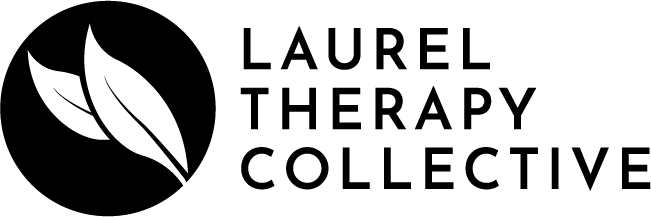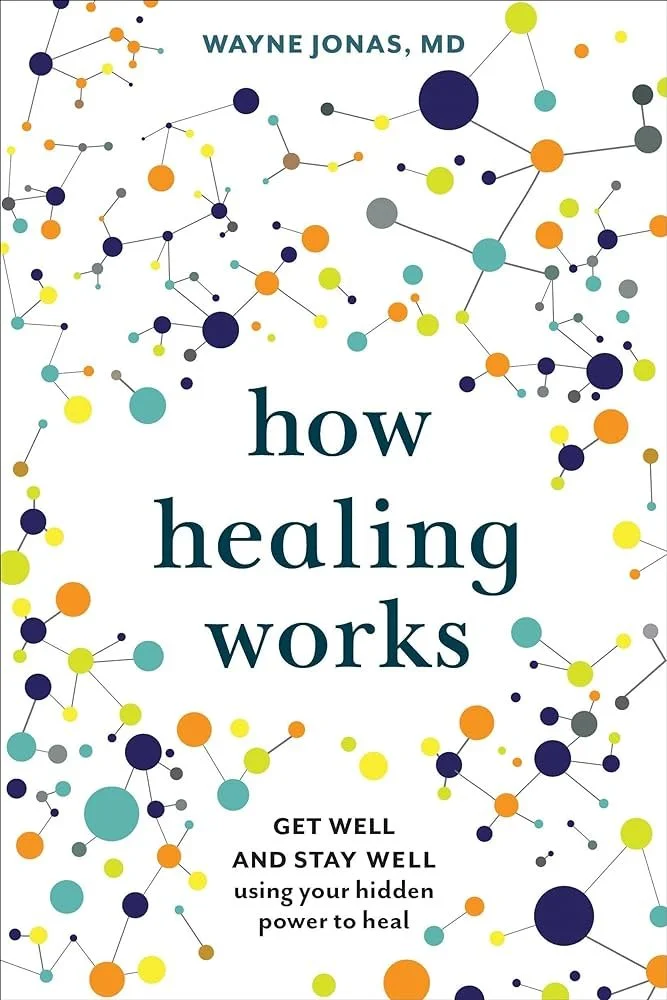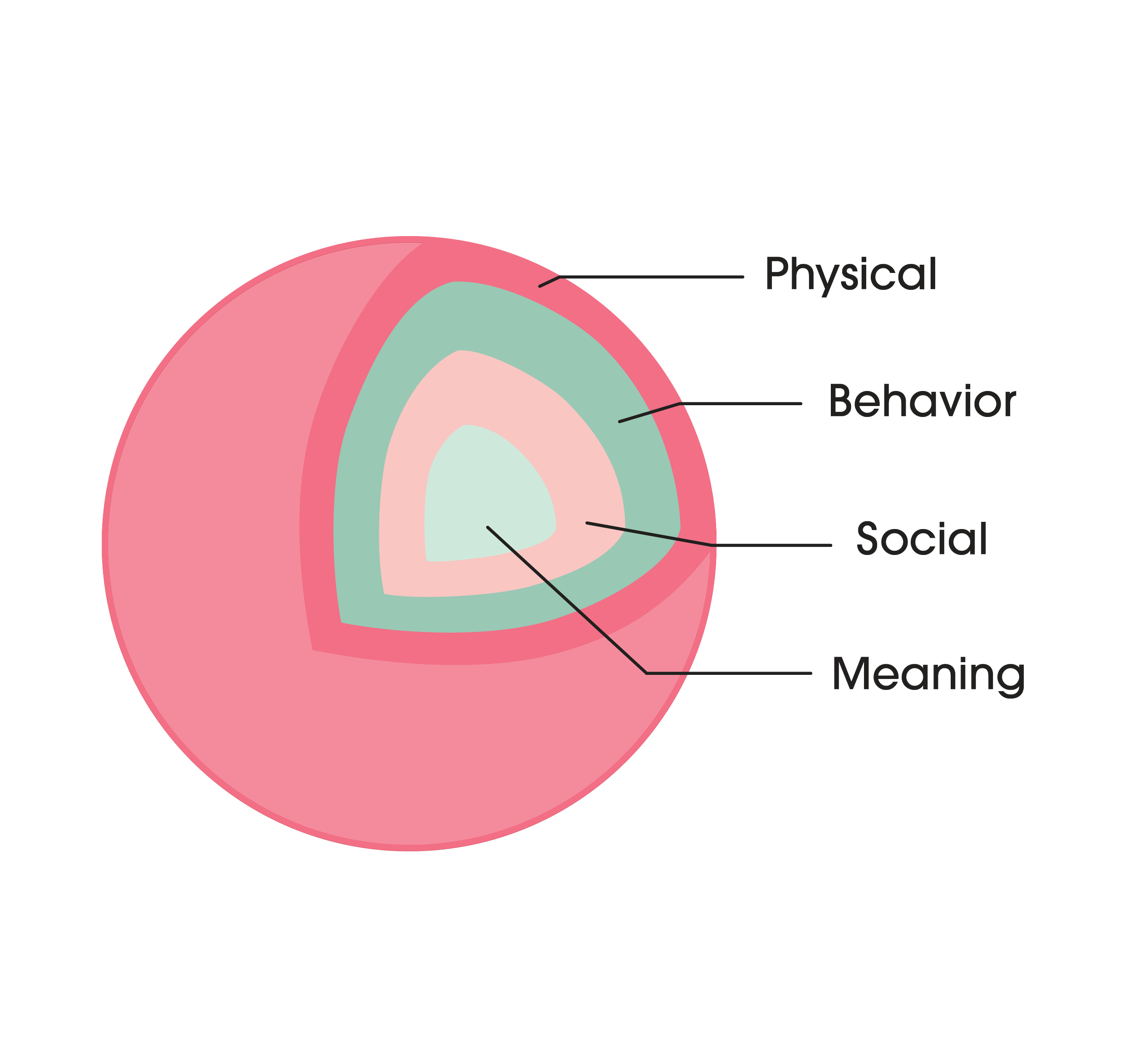Therapeutic Book Review: How Healing Works by Wayne Jonas, MD
How Healing Works is a research-backed book about what many people already know: medicine alone will not heal us. The book is about how people with complex medical conditions can find healing. The content is disruptive to mainstream medicine while also being hopeful and empowering. To be clear, Jonas is exploring how people can pursue healing in addition to working with Western science.
The author's focus on integrative and holistic care wins readers over without slandering allopathic medicine. With a hopeful tone, it invites you to think about the difference between curing and healing. It also presents some staggering statistics. In particular, Jonas demonstrates how 80% of our healing happens outside of medical care. This is an amazing finding, and lends itself well to mental health and therapy.
About Wayne Jonas, MD
Dr. Wayne Jonas has an impressive résumé. He has a medical degree from Wake Forest, served in the army as a medical officer, and headed research departments for Walter Reed, National Institutes of Health, and the Samueli Institute. His impressive career gives authority to the book. This is necessary, become some of his concepts are challenging and disruptive. His emphasis in the book is on alternative and complementary medicine, which he has devoted most of his career to studying.
Overview of How Healing Works: Get Well And Stay Well Using Your Hidden Power To Heal by Wayne Jonas, MD
The book explores the nuances of the placebo effect, the impact of meaning on patient responsiveness to care, and expands on the mind-body connection. Jonas offers lots of stories of patients he's worked with, illustrating complex concepts. While at times the text is dense, those of us without medical degrees can follow along fine.
A Tone of Overall Hope and Empowerment
Dr. Jonas has seen plenty of suffering in his decades-long medical career. While many doctors become burnt out or traumatized from being around constant suffering, this book is hopeful. It also explicitly suggests we all have more power and control over our own healing than we think. The final section of the book offers suggestions for complementary ways patients can enhance their own healing. The key is to find what is meaningful to the patient. Healing, after all, is different for everyone.
Differentiating Whole System Healing From Acute Healing
Most of this book is about chronic or complex conditions. Jonas differentiates between the "science of the small and particular" and whole system science. The "science of the small and particular" is what Western medicine excels at. This includes treating acute infections, setting bones, and so forth. But when it comes to chronic pain, brain injuries, diabetes, and even cancer, the science of the small and particular only goes so far. He then explores all the ways that people have supported their own healing. He never condemns Western medicine, only cites its limitations. All the alternative treatments he explores are complementary.
The 20/80 Rule of Healing
Jonas provides compelling evidence to back up his claim that medical intervention accounts for only 20% of healing. The remaining 80% of healing is derived from the meaning the patient makes of the care they received. This is staggering! But Jonas cites countless studies that prove this. It even holds up with surgeries for back pain. If the patient believes the surgery will work, it is likely to work.
What's so fascinating about this data is that is accounts so much for culture. In cultures that widely practice acupuncture, acupuncture has a stronger impact. This is true on the individual and cultural level. More on that later...
The Placebo Effect
If the 20/80 rule is true, this naturally brings up questions about the placebo effect. Jonas explores placebo in detail, telling patient stories to illustrate concepts. The placebo effect, it turns out, isn't so simple. Placebos taken four times a day are more effective than those taken once a day. Even patients who know they're receiving a placebo still show improvement beyond lack of treatment. The extensive research on this really demonstrates that power of meaning, and leads to the mind-body connection.
Beyond The Mind-Body Connection: The Bio-Psycho-Social-Spiritual Model
Throughout the book, Jonas showed a graphic of his model of whole systems healing. This appears like a globe with an intersection cut out, revealing four layers. This is his model of holistic healing. Honestly, we love it. It matches everything we know and believe about holistic mental health.
The Essential Layers of Health and Healing
The first layer is the physical layer. Here we see the need for treating infection, eradicating cancer cells, setting bones, and medications.
The second layer is behavior. This includes what we eat and drink, how much we move, how we follow through on things that can help our damage our healing. It also involves engaging with things we enjoy.
The third layer is social, and cannot be overstated. Community, family, and love are some of the strongest predictors of healing. When we feel connected, we feel less pain. We sleep better. Our heart rates are lower. And yet so few doctors make explicit recommendations to engage with community.
The final layer is the spiritual layer. The author doesn't cite religion as the only path toward spiritual healing. Connection to nature, to values, but mostly to meaning are what provide healing here.
The Power of Storytelling About Healing
Healing looks different for everyone. Some of the stories in this book are nothing short of inspiring: A grandfather with excruciating back pain experienced healing after surgeries, injections, and prescriptions failed him.
An older woman who reduced her arthritis through movement, vitamins, and volunteering.
A war veteran who healed his traumatic brain injury in community with others receiving an oxygen treatment that has no medical support.
A military cook who teamed up with a Mexican mom to teach cooking classes and in turn balanced their blood sugars and weight.
A successful businessman who reversed symptoms of Parkinsons through medically unproven Ayurvedic intensives.
The author's own wife bouncing back from a second round of intense chemotherapy through community, time with her grandchild, and redecorating their bedroom.
Never once does Jonas suggest that people should avoid Western medicine. Cancer cells don't care what color the bedroom walls are. But he does suggest that the body can recover from surgery and chemotherapy faster when we are intentional in all four layers of health. This includes our relationships, environments, and spiritual lives.
Deep Appreciation of Culture and Meaning
Dr. Jonas provides many examples of how culture and meaning about medical care are inseparable. These examples often defy strict medical effectiveness findings. A Native American patient sees profound healing through a traditional ceremony called The Beauty Way. An immigrant balances her blood sugar by making healthier versions of traditional dishes for her extended family. A retired teacher recovers from debilitating fatigue by teaching literacy classes. A veteran heals a brain injury through group oxygen therapy sessions with other vets. And his wife sees an improvement in her energy post-chemo after making a traditional holiday cake for their family.
None of these examples would have a healing effect on everyone. Healing is deeply personal. This underscores the book's premise that there is no one correct way to heal.
Relevance to Mental Health and Therapy
Dr. Jonas' career and training have been focused on physical health. So it makes sense that he doesn't give many examples involving mental health struggles. Nonetheless, the book is a powerful advocate for individualized mental health care. Again, this isn't to discourage people from taking medications. Absolutely not. But it does show how working with a therapist to find meaning in our lives can be a powerful healing tool.
Just like Western medicine, there are some diagnoses we know respond well to specific treatments. If you have OCD, you should try exposure and response prevention first. If you have trauma, you should try EMDR or TF-CBT first. If you have borderline or struggle with emotion regulation, you should try DBT first. But these treatments don't work for everyone. Even for those it does work for, we need more than one hour a week of care to find true healing. We shouldn't give up just because the first line of treatment didn't work. We probably need a more holistic approach to healing.
The Bio-Pyscho-Social-Spiritual Healing Model: Holistic Therapy
In holistic therapy, your therapist will use the same modal as Jonas presents for true healing. This provides comprehensive care no pill could provide.
The Physical Layer of Mental Health
First, your therapist should rule out any medical causes for your mental health issues. This might include getting your thyroid checked, checking for iron deficiency, etc. This ensures we don’t spend time trying to treat a mental health issue when there is something else going on.
The Behavioral Layer of Therapy
Then, if no physical issues are present, we look at behaviors that might be making you feel worse. Drinking, poor sleep or nutrition, lack of movement, etc, all have a big impact on our mood. Sometimes changing behavior can be hard. In those cases, your therapist will work with you to figure out how to create lasting positive change.
The Social Layer of Therapy
Once behavior is examined, your therapist will explore your community and relationships. Who you surround yourself with has a profound effect on your mental health. We also don't always get a choice. This area of healing can look like setting up boundaries, deepening connections, or making tough choices.
The Meaning and Spiritual Layer of Therapy
And finally, your therapist will explore your spiritual life. This looks at meaning, narrative, and connection to values, culture, and beliefs. It is not to be confused with religion, though for some that might be part of it.
By addressing all four layers of healing, holistic therapy can have a profound impact on mental health and wellbeing.
Holistic Therapy: Emotional Healing Starts Whenever You're Ready
If you're contemplating therapy and ready to work with a therapist who supports whole systems healing, feel free to set up a consultation. There's no pressure to book. Your healing is in your hands.










